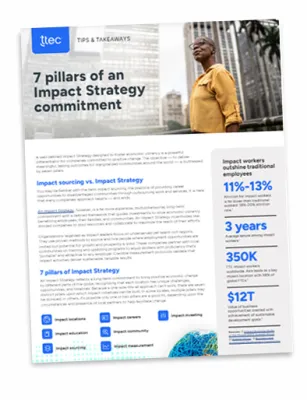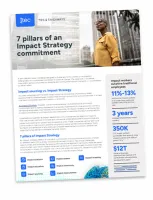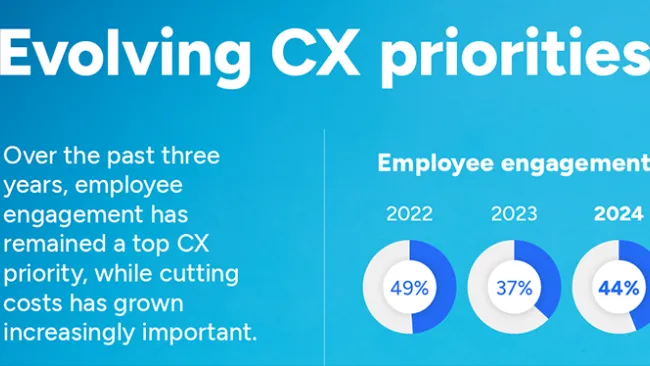The very notions may be enough to make some executives uneasy: A loose corporate structure; no internal hierarchy; free rein; employees reporting directly to the CEO, or to no one at all.
But an innovative crop of business leaders is embracing this type of “flat” organizational structure. Having tossed aside the proverbial corporate ladder, there’s no need to climb the ranks at these companies—the conventional path from entry level to middle manager to executive is not an option.
Organizations with flat structures have few or no levels of management between staff-level workers and upper management. The goal, proponents say, is to put employees on equal footing, freeing them from potentially stifling corporate hierarchy and encouraging them to take ownership of the brand’s decision-making process.
“The appeal to organizations is that they can push decision making down the organization to staff associates and, when associates have higher decision-making authority, they can respond to customers and the market much more quickly than if they have to continually push those decisions up the organization to someone else,” says Kyle Brost, principal at Kansas-based Choice Strategy Group, a consulting firm that advises Fortune 500 companies and others on organization design and other matters.
When done right, a flat structure gives executives faster access to information about their customers and the market because there are fewer channels between them and the associates who typically know customers best. And employees feel greater autonomy, control, and engagement, says Brost.
Brands with a high customer touch, in particular, could benefit from going flat, he says, but it is not a simple endeavor. “The concept of a flat organization structure is gaining popularity,” he adds, “but I don’t know if many companies are doing it successfully.”
How are flat companies managing their new corporate structure and their business focus? Three firms share their stories.
Logistics Plus
When Jim Berlin began his career as a truck driver, he hated working for a large company where “everything was top-down and rigged.” He later started Pennsylvania-based Logistics Plus Inc., which manages domestic and international freight shipping logistics.
“For me, everything should be bottom-up,” he says, so he embraces a flat structure at his company. “I think people should reach, take on new responsibilities, and try new things. And I’m a big believer of giving people a chance to learn on their own, fall, and then get up again.”
From the company’s outset, Berlin, who is CEO, has made strategic decisions based on what feels right to him.
“The only plan we’ve ever had is to grow and figure things out as they come,” he says of his business, now a $150 million company. “We still have no budgets, no strategy, no business plan, and no org chart. I like to call it ‘entrepreneurial plus.’”
The decision is a risk that won’t pay off for every company, he warns, “but for us it works well.”
Employees appreciate the freedom they have and enjoy their jobs, he says, though it’s not without some downsides.
“It’s a very Wild West, rough-and-ready culture,” Berlin says, and that competitiveness is not for everyone. “If you want to come to a place where you’re told what you do, and every day someone is going to tell you ‘good job, good job,’ and it’s the same day-in and day-out, then this place is not for you.”
SEMrush
Companies are best poised to embrace a flat structure when they come to it organically, says Oleg Shchegolev, CEO and co-founder of international digital marketing firm SEMrush.
“To me, it’s really normal if a company comes to this structure by itself,” he says. “For SEMrush, it was simply easier and more pleasant to work with those who are more interested in self-managed teams.”
Shchegolev oversees more than 400 employees who work out of offices based in the United States, Czech Republic, Russia, and Cyprus. The workers comprise roughly 50 teams, but the company has just eight managers.
“People get more results when they set their own goals, when they understand the responsibility of the whole team, when they aren’t working under a yoke,” he says. “And it’s not a secret that Millennials prefer to have fewer managers.”
He continually assesses ways to make the company more efficient and says, “At the moment, we are thinking about whether we will increase our number of managers or develop a culture of self-organized teams.”
Like others, SEMrush has found a flat workplace doesn’t suit everyone.
“There are a huge number of people who are uncomfortable functioning in such a structure, and they usually quickly understand that it’s not their preferred format for working, so they leave the company,” Shchegolev says.
Others thrive in it, he says. “Some talented individuals really ‘die’ when they feel oppressed. At SEMrush, our flat structure gives team members the opportunity to explore their talent to feel free to come up with new ideas and implement new formats. That’s really why we have so many great specialists who’ve been so successful at our company.”
Valve
The world has been flat at Valve, a Washington-based software and gaming company, since it launched 21 years ago. Its handbook for new employees, posted in its entirety on Valve’s website, bears the proud subtitle: “A fearless adventure in knowing what to do when no one’s there telling you what to do.”
Referring to the company as “Flatland,” Valve officials tell new hires the company has a unique way of operating that will offer amazing professional experiences, “but it can take some getting used to.”
Valve prides itself on recruiting smart, innovative workers, the book says. “We want innovators, and that means maintaining an environment where they’ll flourish. That’s why Valve is flat.”
Gabe Newell holds the title of founder and president at the company, but he doesn’t manage employees and no one “reports to” anyone else.
“This company is yours to steer, toward opportunities and away from risks,” the handbook tells employees. “You have the power to green-light projects. You have the power to ship products. A flat structure removes every organizational barrier.”
Proceeding with caution
These company leaders couldn’t imagine their businesses any other way, but they have encountered challenges. Special attention must be given to the hiring process to ensure new employees are a good fit for a flat workplace, says Logistics Plus’ Berlin.
“If you do the right job and you hire the right people for that, they love it,” he says. “If you hire the wrong people, they hate it.”
Valve officials also emphasize that in their handbook: “Any time you interview a potential hire, you need to ask yourself not only if they’re talented or collaborative, but also if they’re capable of literally running this company, because they will be.”
When employees don’t mesh well with the culture, problems can arise.
“One of the pitfalls of having a very loose, flat structure is that people can abuse it,” says Berlin. Sometimes, employees take advantage of the system at the expense of others who are working harder. When that happens, Berlin says, it tends to work itself out with good employees calling out those who aren’t carrying their own weight.
“The other challenge I’ve found with a flat structure, particularly as we have grown and expanded around the world, is it’s hard finding people that really embrace and share the same culture of the company,” he says.
SEMrush’s Shchegolev feels his company’s structure is a selling point among many recruits, but also can be a hiring obstacle. Many would-be hires “seem to want to be part of such a structure,” but ultimately decide it’s not for them, he adds.
Shchegolev cautions business leaders against “going flat” merely to follow a trend. “I would not categorically initiate such a transformation if doing so does not coincide with the philosophy and mentality of the company’s founders.”

















